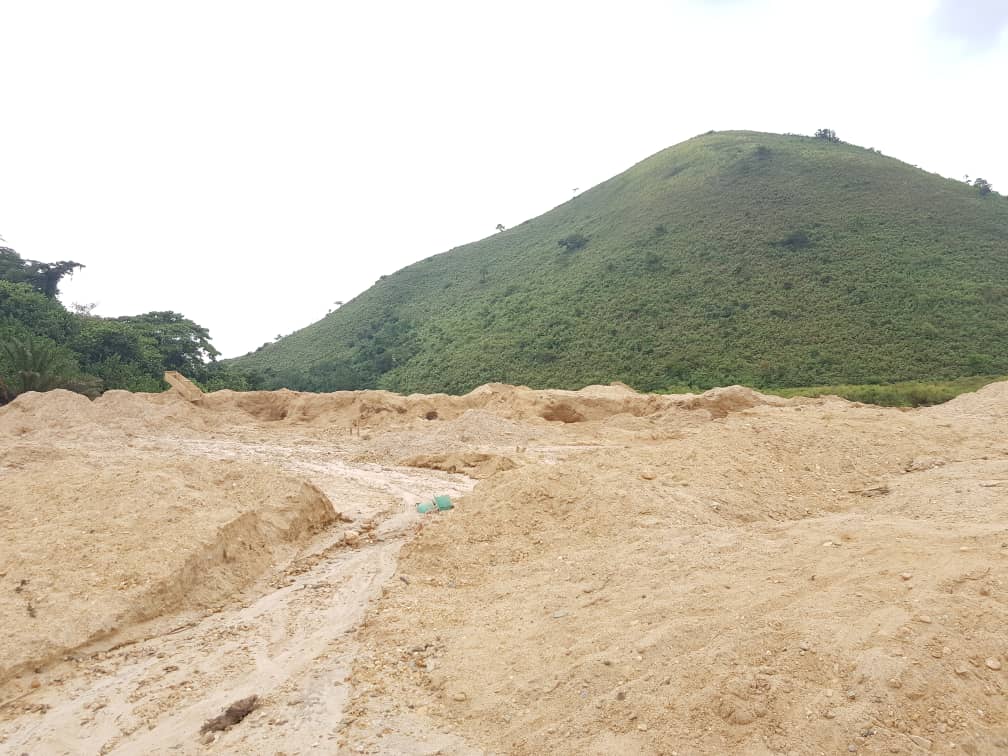How the pursuance of two leading norms of climate change mitigation – state sovereignty, and free markets – has contributed to the marginalisation of other key norms of global environmental governance, including social justice?
I focus on the Reducing Emissions from Deforestation and Forest Degradation (REDD+) programme, which provides an interesting case study on how the interpretation of mutually agreed general intentions–expressed as common principles embedded in shared institutions, materialized into specific practices—actually forwards the interests of the most powerful stakeholders.
Thin governance through constructive ambiguity
Drawing on Michael Walzer’s ideas about ‘thick’ and ‘thin’ morality, I seek to assess how the growing thinness of the REDD governance system has contributed to the watering down of many of the original objectives. According to Eero Palmujoki, governance is deemed thick if members of the polity ‘share numerous institutions and approximately similar understanding of their content, norms and procedures’.
While it is often argued that culturally specific ‘thick’ values are derived from universally shared ‘thin’ values, Walzer argues that this is not the case: ‘morality is thick from the beginning, culturally integrated, [and] fully resonant’. Thin values, on the other hand, consist of principles ‘that are seen to be similar even though they are expressed in different idioms and reflect different histories and different versions of the world’.
Recent global agreements on environmental governance are typically built on widely employed boundary concepts.
However, the different groups of stakeholders who have temporarily seized upon a single common aspect, often in situations of crisis, are not all committed to the same ultimate values; the commonality is often very thin.
Recent global agreements on environmental governance are typically built on widely employed boundary concepts, such as ‘sustainable development’, or the more recent ‘integrated landscape approach’ (ILA). They, as James Reed et al. argue, are promoted as potential mechanisms ‘to alleviate poverty in an equitable manner, conserve biodiversity, safeguard forests, sustainably manage natural resources, while maintaining food production and mitigating climate change’.
Such concepts include a key common aspect, which appeals to different stakeholders, and yet are flexible and plastic enough to be employed differently by them. The advantage of this ‘constructive ambiguity’ is that the discourse built around the common aspect is able to gain legitimacy and support from a wide range of actors.
The vagueness conceals underlying conflicts of interests and values, which will emerge as the discourse takes on a more concrete shape through practice.
However, the disadvantage is that the vagueness conceals underlying conflicts of interests and values, which will emerge as the discourse takes on a more concrete shape through practice.
In this context, practice refers to an established discourse, which is connected to international and national governance activities. According to Bas Arts et al., it is ‘an ensemble of doings, sayings and things in a specific field of activity’. As such, I consider practices and not intentions as the constitutive elements of governance. Practices take a crucial place in this study because they show how shared boundary concepts can lead to dissimilar, concrete, specific interpretations that bring unequal advantages to different stakeholders.
Fragmentation of the REDD discourse
The ultimate objective of the UN Framework Convention on Climate Change (UNFCCC) is to achieve ‘stabilisation of greenhouse gas concentrations in the atmosphere at a level that would prevent dangerous anthropogenic interference with the climate system’. In the REDD scheme, as we have argued with Palmujoki, developing countries can contribute to the mitigation targets of the convention ‘by trading carbon assets stored in their forests on global carbon markets, or through direct transactions from developed to developing countries’.
In another article Palmujoki shows that in the UNFCCC system, participation is, at least in theory, grounded by a broad consensus on the key norms that support it: sovereignty, justice, and free markets. However, as noted by Palmujoki the system of governance formed by the UNFCCC process is actually thin, and a consensus has only been reached with regard to the primary goal of limiting the global greenhouse gas (GHG) emissions.
For the US, private markets are the backbone of climate change policies, and market practices for emission trading were originally developed in the US in order to create voluntary mechanisms for curbing domestic GHG emissions. This idea was later adopted by the UNFCCC process and has become an established international practice.
EU has accepted both climate justice and free markets as the key norms of climate change governance.
Different from the US, which has not accepted the norm of setting emission limits to the developed countries only, the EU has accepted both climate justice and free markets as the key norms of climate change governance. The broad category of ‘developing countries’ includes both emerging economies and LDCs; the emissions of the latter are minimal compared with those of the former.
The common factor is the emphasis they place on the norms of sovereignty and justice. For this group, justice means that a climate convention cannot prevent them from achieving their national development goals. In general terms, they are supportive of activities that strengthen the state’s administrative capacity, but practices that give power to international actors are perceived as a threat to sovereignty.
From markets to development assistance
The UNFCCC negotiations have strengthened certain practices in climate change mitigation, namely free markets and development assistance. In an article analysing the rhetoric of climate change, Palmujoki shows that Western donors and multilateral funding institutions (MFIs) emphasise market-based mechanisms and their economic principles in climate change governance; this has turned the discourse away from other relevant norms, such as state sovereignty, social equity, and justice.
However, in both UNFCCC discussions and pilot projects, the idea of free markets has become obscure, while the general principles of financing carbon sequestration remain indeterminate.
Many market-based pilot projects have already been discontinued due to price variance (or near collapse) in global carbon markets, while most of the funding is actually donor-based and has gone to REDD preparedness projects, not to actual carbon sequestration. The technical aspects supported by the projects, including harmonisation of general accounting systems and the definition of baselines, are crucial for a market-based system. However, albeit apparently technical, they refer to concrete practices that are very political in nature, such as who measures the change in carbon stocks stored in the forest and by which criteria.
The economic rhetoric behind the market approach justifies a liberal pluralistic model based on the interests of different stakeholders. In climate change governance, as Palmujoki has been arguing, it is interpreted as broadening the involvement of private actors and civil society.
But while governance values that consist of the participation of all stakeholders in decision-making and benefit sharing appear to be thick, in practice they seem to evaporate in the REDD project routines and thus reflect thin values. In concrete projects, this often means dominance of the interests promoted by the donors and MFIs. Although the influence and interaction is mutual, neither is equal.
For developing countries, the issue concerns regulative mechanisms: either market-based or state regulation. The market approach is based on limited arrangements, where the role of private actors is quite important.
While the arrangements refer loosely to the UNFCCC process, Palmujoki shows that they are based on different norms and have overlapping regulations, thus reflecting the thinness of the climate change governance system.
The process has also introduced new aid-related initiatives and actors who bind developing countries into mitigating climate change; this has strengthened the role of development assistance practices. In the context of the REDD preparedness projects, for example, the governance models tend to follow the practices already applied in traditional development assistance projects.
Strengthening the state
The preparedness assistance also has another consequence. For the goal of curbing GHG emissions, target countries need to create credible measuring, reporting, and verification systems that ensure emission reductions and thus trade on emissions. In most cases, financial assistance is channelled through the government following the traditional development assistance model.
While the related practices are apparently technical, they are actually closely attached to the institution of sovereignty: in order to ensure effective control of national climate policies and forest resources, the governments’ administrative capacities are strengthened and their sovereignty tends to be reinforced. This means that, as a result of the technical and financial practices introduced through preparedness assistance, climate change governance has become increasingly state-centred in certain aspects.
In order to ensure effective control of national climate policies and forest resources, the governments’ administrative capacities are strengthened and their sovereignty tends to be reinforced.
This has arguably weakened the position of other normative principles, including equity among citizens. On the national level, one critical issue concerns how to divide the costs and benefits of REDD projects with local communities.
While those promoting REDD have maintained that the participatory practices will increase their role in forest management and strengthen tenure rights, previous experience shows that, in most cases, they have failed to secure local rights and benefits. While the prescribed procedures have been formally followed, Palmujoki points out that the political-economic elite has been able to manipulate the process and capture the benefits.
The Integrated Landscape Approach in Mozambique
Recently, a compromise between the market-oriented and sovereignty-oriented approaches has been sought in the ILA; this compromise can be defined as a framework for integrating policy and practice for multiple competing land uses through the implementation of adaptive and integrated management systems.
Through participation, inclusive negotiation, and planning, it claims to minimise trade-offs and maximise synergies so that there are fewer losers and more winners.
The approach promotes a framework that aims to integrate agriculture, the natural environment, and different livelihood systems toward a sustainable development agenda. ILA was introduced to the REDD context in 2013 by the World Bank and has been adopted by influential bilateral donors, international research institutions, and NGOs.
Tobias Nielsen has emphasized that although it has gained a degree of public attention, it has not been institutionalised into formal agreements, such as the UNFCCC negotiations texts or the 2015 Paris Agreement . A principal reason why the landscape approach has gained a strong foothold in the REDD context is finance; after the collapse of the carbon markets, there is relatively little REDD finance available, while funding for agriculture is abundantly obtainable from public and, in particular, private sources.
In Mozambique, the changed situation led to re-assessment of the national REDD approach, including the emphasis on carbon trade and exclusive focus on forests, resulting eventually in the adoption of ILA as the framework for the National REDD+ Strategy.
In practice, this means that attempts to secure funding for forest conservation and afforestation are increasingly sought from large-scale agribusiness, which is well in line with the government’s policy of agricultural modernisation based on private-public-partnerships and foreign direct investment.
The strategy is to link commercial investment in agriculture with ‘patient capital’ from public sources (the national government and/or foreign donors) for non-profit-making infrastructure development, which would serve as a long-term subsidy for commercial agriculture.
The theory of change behind the National Strategy is that improving the enabling environment for (mainly foreign) forest and agriculture investments and exports will promote sustainable forest and land management practices, contribute to improved rural livelihoods, and support national efforts to address the drivers of deforestation and forest degradation.
The way the implementation actually unfolds depends on the relative weight given to the different practices promoted by the implementation partners.
A number of established environmental NGOs and academic institutions have joined the ILA consortium through which REDD is to be implemented in Mozambique. The way the implementation actually unfolds depends, however, on the relative weight given to the different practices promoted by the implementation partners.
One interesting indicator is resource allocation within the strategy’s action plan, wherein the lion’s share (83%) goes to industrial forest plantations. Most of the remaining REDD funding is directed to institution building and diverse rural development practices, and the host government appears to have given full backing to the large-scale investors as shown by Laura Silici, Calisto Bias and Eunice Cavene.
Who wins, who loses?
Due to the thinness of the governance system based on ILA, there is a threat that REDD, in Mozambique, becomes a subplot in the global land grab that entails significantly negative impacts on access to and control over natural resources, food security, and human rights—particularly for local communities and small-scale farmers.
Instead of a win-win result for all, a recent global assessment of transnational land deals shows a win-win-loss situation for international investors, host governments, and local communities, respectively.
Focusing on social acceptability, economic viability, and environmental conservation, the assessment shows gain in all three dimensions for the investors, while local communities experience loss in all three. The latter are particularly affected by loss of significant parts of their land for little or no compensation, which makes their livelihoods increasingly vulnerable; this is something that the Mozambican small-scale farmers have already experienced.
The host government is likely to experience gains in capital flow, infrastructure, and salaried employment, with losses in biodiversity, ecosystem services, and climate change.
This essay is part of a series of articles published to celebrate the academic career of Eero Palmujoki.
Pekka Virtanen works as a science advisor at the Department of Social Sciences and Philosophy, University of Jyväskylä.




